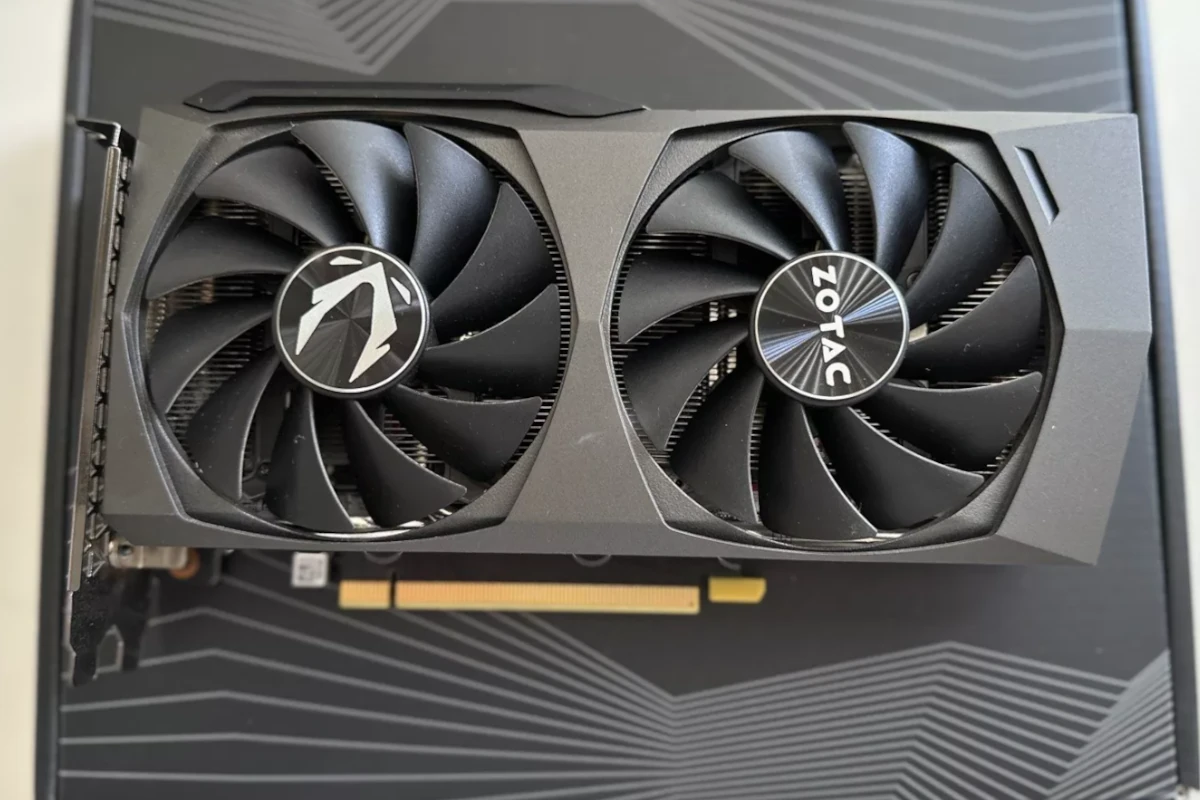Overclocking your GPU is a powerful way to boost gaming performance without spending money on new hardware. By adjusting your graphics card’s settings, you can increase frame rates and improve visual quality in your favorite games. Overclocking your GPU can give you up to 15% performance gains depending on your card model and can be done safely with the right approach and tools.
Getting started with GPU overclocking is easier than you might think. Modern overclocking software like MSI Afterburner or GPU Tweak III provides simple interfaces to adjust core clock, memory speeds, and power limits. The process involves small, incremental changes followed by stability testing to find your card’s perfect balance between performance and reliability.
While overclocking might sound intimidating, today’s graphics cards include built-in safeguards to prevent damage. Most GPUs have temperature limits that automatically throttle performance before any harm occurs. This safety net allows even beginners to experiment with overclocking while minimizing risks.
How to Overclock Your GPU: Step-by-Step Guide
Overclocking your GPU can improve gaming and rendering performance, but it must be done carefully to avoid crashes or overheating. Follow these steps to safely overclock your graphics card:
Step 1: Check Your GPU Model and Capabilities
- Identify your GPU using tools like GPU-Z or MSI Afterburner.
- Check if your card is unlocked for overclocking (most desktop cards are).
- Research typical stable overclocks for your specific GPU model.
Step 2: Install Overclocking and Monitoring Tools
- MSI Afterburner (Windows): Industry-standard for overclocking and monitoring.
- GPU-Z: Displays technical info and live stats.
- Heaven Benchmark or 3DMark: Used to stress test your GPU after adjustments.
Step 3: Increase Power and Temperature Limits
- In MSI Afterburner, increase the Power Limit and Temperature Limit to the maximum safe values.
- This allows your GPU to use more power when needed, increasing overclocking headroom.
Step 4: Slowly Increase Core Clock
- Start with a +25 MHz boost on the Core Clock.
- Apply settings, then test stability with a benchmark or stress test for 10–15 minutes.
- If stable, increase in small increments (e.g., +15–25 MHz) and repeat testing.
- Stop when you encounter artifacts, crashes, or the benchmark fails.
Step 5: Increase Memory Clock
- Apply the same gradual method: start with +50 MHz on the Memory Clock.
- Test for stability and artifacts.
- Continue increasing until instability occurs, then dial it back to the last stable value.
Step 6: Monitor Temperatures and Stability
- Keep GPU temps below 85°C for long-term safety.
- Use tools like HWMonitor or MSI Afterburner to track temperatures.
- If temps are too high, consider improving case airflow or adjusting the fan curve.
Step 7: Save and Test Your Final Settings
- Once stable, save the overclock profile in MSI Afterburner.
- Run long-duration benchmarks and several demanding games to confirm stability.
- Revert settings if you see crashes, screen flickers, or overheating.
Step 8: Set Overclock to Run at Startup (Optional)
- Enable MSI Afterburner’s option to apply settings at Windows startup if you want your overclock to persist.
Note: Every GPU behaves differently. There’s no one-size-fits-all overclock, so patience and gradual testing are key. Always prioritize stability and cooling over pushing max frequencies.
Key Takeaways
- GPU overclocking can boost gaming performance for free with potential gains of 5-15% in frame rates.
- Start with small clock increases and thorough stability testing to find your graphics card’s optimal settings.
- Modern overclocking tools make the process accessible while built-in safeguards help protect your hardware.
Understanding GPU Overclocking
GPU overclocking allows you to push your graphics card beyond its factory settings for better performance. This process involves careful adjustments to core frequencies, memory speeds, and power limits while managing heat and stability.
What Is GPU Overclocking?
GPU overclocking means increasing your graphics card’s clock speed above the manufacturer’s default settings. Clock speed measures how many processing cycles your GPU can perform per second, typically measured in MHz. Higher clock speeds enable your GPU to process more information faster.
When you overclock, you manually adjust several components:
- Core clock: The main processing unit’s speed
- Memory clock: How fast the GPU’s dedicated memory operates
- Power limit: How much electricity the card can draw
Modern overclocking tools like MSI Afterburner or EVGA Precision make this process relatively straightforward. These programs offer sliders to adjust settings incrementally while monitoring performance and temperature.
The goal is finding the sweet spot where your GPU runs faster without becoming unstable or overheating.
Benefits of Overclocking Your GPU
The main advantage of overclocking is getting a free performance boost. A properly overclocked GPU can deliver:
- 5-15% more frames per second in games
- Faster rendering times for video editing
- Better performance in 3D applications
- Extended lifespan of aging graphics cards
This performance increase comes without spending money on new hardware. Many users find their older cards can handle newer games with proper overclocking.
For budget-conscious gamers, overclocking a mid-range card can help it perform closer to higher-tier models. This approach offers excellent value, especially when graphics card prices are high.
Risks and Considerations
Overclocking isn’t without risks. The most immediate concerns are:
Temperature issues: Pushing your GPU harder generates more heat. Without proper cooling, this can shorten your card’s lifespan. Most modern GPUs will throttle performance before damage occurs, but maintaining good airflow in your case remains essential.
Stability problems: Too aggressive overclocking can cause crashes, artifacts (visual glitches), or system freezes. These issues signal that your settings are too high.
Warranty concerns: Many manufacturers consider overclocking grounds for voiding warranties. Check your warranty terms before proceeding.
Power consumption: Overclocked GPUs draw more electricity, increasing your power bill and requiring a more robust power supply.
Start with small adjustments and test thoroughly between changes. A modest, stable overclock is better than an aggressive one that causes crashes.
Before You Begin
Overclocking your GPU requires careful preparation to avoid potential damage and ensure the best performance gains. Taking the right steps before starting will help you maximize results while maintaining system stability.
Checking GPU Compatibility
Not all graphics cards can be overclocked effectively. Start by identifying your GPU model and researching its overclocking potential. Newer NVIDIA and AMD cards typically offer better overclocking headroom than older models.
Some GPUs come factory-overclocked (especially models labeled as “OC Edition” or “Gaming”), which means they may have limited additional headroom. Check if your GPU has voltage locks that prevent pushing power beyond certain limits.
Your cooling solution matters significantly. Cards with better cooling systems (multiple fans, larger heatsinks) can handle higher clock speeds without overheating. Make sure your case has good airflow with enough intake and exhaust fans.
Warranty considerations are important too. Some manufacturers allow overclocking while others may void your warranty. Check your card’s warranty terms before proceeding.
Understanding Overclocking Software
Several reliable tools can help you modify GPU settings safely. MSI Afterburner is the most popular and works with nearly all modern GPUs regardless of manufacturer. It offers a user-friendly interface with comprehensive monitoring features.
For AMD cards, AMD Software: Adrenalin Edition provides built-in overclocking options. NVIDIA users can try EVGA Precision X1 or ASUS GPU Tweak as alternatives to Afterburner.
These programs let you adjust core clock speeds, memory frequencies, voltage, and fan curves. Most include monitoring tools that display real-time information about temperatures, clock speeds, and power consumption.
Before making changes, familiarize yourself with the software’s interface. Learn what each slider does and how it affects performance. Most programs allow you to save multiple profiles, which helps when testing different settings.
Benchmarking Tools and Stress Tests
Before changing any settings, establish baseline performance with benchmarking tools. 3DMark and Unigine Heaven are excellent for measuring gaming performance and creating comparison points.
Record your stock GPU performance scores to compare with your overclocked results later. This helps determine if your modifications actually improve performance.
For stability testing, use FurMark (often called “GPU torture test”) to push your card to its limits. This program creates extreme thermal loads that reveal instability quickly. However, use it cautiously as it can generate dangerous heat levels.
Gaming benchmarks like built-in tests in modern games provide real-world performance data. Play demanding games for at least 30 minutes to check stability under normal usage conditions.
Temperature monitoring is crucial during testing. Most GPUs should stay below 85°C under full load. If temperatures exceed this, improve cooling or reduce your overclock settings.
Overclocking Process
Overclocking your GPU involves careful adjustments to core settings and thorough testing to ensure stability. The process requires attention to several key components that work together to boost performance while maintaining safe operation.
Setting Up Overclocking Software
MSI Afterburner is the most popular overclocking tool for GPUs. It works with nearly all graphics cards, regardless of manufacturer. Begin by downloading the latest version from the official website and installing it on your computer.
After installation, launch the program. You’ll see sliders for core clock, memory clock, power limit, temperature limit, and fan speed. The interface shows your current GPU settings and provides monitoring graphs for temperature, usage, and other metrics.
Take a moment to familiarize yourself with the layout. The monitoring section is particularly useful for tracking performance during testing. Save your original settings as a profile before making any changes. This creates a safe point to return to if needed.
![Screenshot of MSI Afterburner interface with labeled controls]
Adjusting Core Clock and Memory Clock
Start with small increases to the core clock. Move the core clock slider up by 10-15MHz and apply the changes. Run a benchmark test to check for stability. If no crashes or visual glitches occur, increase by another 10-15MHz.
Continue this process until you experience issues like game crashes, freezing, or visual artifacts. When problems appear, reduce the clock speed by 20MHz from the last stable setting.
For memory clock adjustments, follow the same gradual approach. Increase in 50-100MHz increments and test after each change. Memory overclocking often provides significant performance gains with minimal risk.
Typical Safe Ranges for Popular GPUs:
- NVIDIA RTX 30 Series: +100 to +200MHz core, +500 to +1000MHz memory
- AMD RX 6000 Series: +150 to +300MHz core, +300 to +750MHz memory
Remember that each GPU is unique. Your specific card may handle more or less overclocking than these ranges.
Managing Voltage and Power Limits
Move the power limit slider to maximum. This allows your GPU to draw more power when needed, which is essential for maintaining higher clock speeds. Most modern GPUs have built-in safety features, so maxing out this setting is generally safe.
Voltage adjustments require more caution. For beginners, it’s best to leave voltage at stock settings. Increasing voltage generates more heat and can shorten your GPU’s lifespan if pushed too far.
If you’re comfortable with advanced overclocking, try small voltage increases (1-3%) only after reaching the limits of what your card can achieve with stock voltage. Never exceed a 10% voltage increase on air cooling.
Temperature is the most important factor to monitor. Keep your GPU below 85°C during stress tests. If temperatures exceed this threshold, either improve cooling or reduce your overclock.
Balancing Fan Speed and Cooling Efficiency
Create a custom fan curve by clicking the fan icon in MSI Afterburner. This allows your fans to speed up automatically as temperatures rise. A good starting point:
- 30% fan speed at 40°C
- 50% fan speed at 60°C
- 70% fan speed at 70°C
- 100% fan speed at 80°C
Faster fan speeds mean better cooling but more noise. Find a balance that works for your tolerance. Using headphones makes higher fan speeds less noticeable.
Consider your case airflow. Adding case fans or improving air circulation can reduce GPU temperatures by 5-10°C. Dust buildup restricts airflow, so clean your computer regularly with compressed air.
For serious overclocking, consider aftermarket cooling solutions like GPU waterblocks or hybrid coolers. These can dramatically lower temperatures and allow for higher stable overclocks.
Testing for Stability and Performance Gains
Run a combination of tests to verify stability:
- Benchmark tools: Heaven, 3DMark, or Superposition for 20-30 minutes
- Real-world testing: Play demanding games for at least an hour
- Stress tests: FurMark for 10-15 minutes (watch temperatures closely)
If any test causes crashes, artifacts, or freezing, reduce your overclock settings. A truly stable overclock should run without issues for several hours of heavy use.
Measure performance gains by comparing benchmark scores before and after overclocking. Most users see 5-15% improvements, though results vary by GPU model and silicon quality.
Record your final stable settings in a profile within MSI Afterburner. You can set this profile to load automatically at startup to always enjoy your performance boost. Temperature monitoring should become a habit when gaming with an overclocked GPU.
Advanced Techniques and Optimization
Once you’ve mastered basic overclocking, you can explore more sophisticated methods to squeeze extra performance from your GPU. These advanced approaches require greater attention to detail but can yield impressive results when done properly.
Fine-Tuning GPU Parameters
Adjusting voltage is one of the most effective ways to optimize GPU performance. Lower voltages can reduce heat and power consumption while maintaining stability. Start by decreasing voltage in small increments (5-10mV) while testing after each change.
Power tuning offers another path to optimization. Most overclocking tools like MSI Afterburner let you adjust the power limit slider. Increasing this value gives your GPU more electrical headroom during demanding tasks.
For memory-intensive applications:
- Memory clocks can be pushed beyond stock settings
- Test in 50MHz increments
- Watch for artifacts or screen flickering
Key parameters to adjust:
- Core voltage (mV)
- Power limit (%)
- Temp limit (°C)
- Core/Shader clock (MHz)
- Memory clock (MHz)
Try setting custom fan curves to maintain lower temperatures. This helps prevent thermal throttling during extended gaming sessions.
Using Custom Cooling Solutions
Stock GPU cooling is rarely optimized for overclocking. Aftermarket solutions can dramatically improve performance headroom. Air cooling options include replacement heatsinks and additional case fans directed at your GPU.
Water cooling offers the best thermal performance:
- Closed-loop AIO GPU coolers (simpler installation)
- Custom water loops (better performance but more complex)
- GPU water blocks for existing loops
Temperature comparison:
| Cooling Method | Typical Load Temps | OC Potential |
|---|---|---|
| Stock Air | 75-85°C | Low |
| Aftermarket Air | 65-75°C | Medium |
| Water Cooling | 45-60°C | High |
Remember that cooler GPUs can maintain higher clock speeds for longer periods. Most modern GPUs automatically boost higher when thermal headroom exists.
Exploring BIOS Tweaks and Modding
BIOS modifications represent the most advanced form of GPU customization. These changes alter the fundamental operating parameters of your graphics card. Warning: BIOS modifications can permanently damage your GPU if done incorrectly.
Tools like GPU-Z let you save your existing BIOS as backup. Specialized editors such as AMD BIOS Editor or NVIDIA NVFlash enable modification of power limits beyond what software allows.
Common BIOS mod targets include:
- Removing power limitations
- Adjusting voltage curves
- Optimizing memory timings
- Enabling disabled cores (on some models)
Custom firmware can unlock features on lower-tier cards that share hardware with premium models. Research thoroughly before attempting any BIOS modifications, as they often void warranties and carry significant risk.
Performance Monitoring and Adjustments
After setting up your GPU overclock, you need to track how it performs and make changes when needed. Monitoring tools help you see if your overclock is working well or causing problems.
Real-Time Performance Tracking
MSI Afterburner includes a monitoring feature that displays crucial performance metrics while you game or run benchmarks. You can track GPU temperature, clock speeds, fan speed, voltage, and FPS in real-time. This data helps you understand how your overclock affects your system.
Set up an on-screen display (OSD) to watch these numbers while gaming. The most important metrics to monitor are:
- Temperature: Should stay below 80°C for most GPUs
- FPS: Higher is better, but stability matters more
- GPU usage: Should be near 100% in demanding games
- Fan speed: Higher speeds mean more cooling but also more noise
Other tools like HWiNFO or GPU-Z can provide even more detailed information. Log data during gameplay to spot any performance issues that might not be immediately obvious.
Adjusting Settings for Optimal Gaming
Fine-tuning your overclock settings is about finding the right balance between performance gains and system stability. Start with conservative increases to core and memory clocks, then test with your favorite games.
If you notice artifacts (strange visual glitches), screen flickering, or crashes, your overclock is too aggressive. Back off by 25-50 MHz and test again. Some games are more sensitive to overclocking than others.
For modern games with ray tracing or DLSS, you might need different overclock profiles. These technologies can put extra stress on your GPU. Create game-specific profiles in Afterburner for titles that need special attention.
Keep track of your results in a simple table:
| Game | Core Clock | Memory Clock | Avg FPS | Stable? |
|---|---|---|---|---|
| Game 1 | +150 MHz | +500 MHz | 120 | Yes |
| Game 2 | +100 MHz | +400 MHz | 85 | Yes |
When to Dial Back Overclocking Settings
Not every situation calls for maximum overclocking. Several warning signs indicate you should reduce your settings:
Temperature concerns: If your GPU regularly exceeds 85°C, reduce your overclock or improve cooling. High temperatures can shorten your GPU’s lifespan.
System crashes or blue screens mean your overclock is unstable. Immediately dial back settings and run tests again.
Visual artifacts like flickering, colored dots, or strange textures signal memory or core clocks pushed too far. Lower them until the artifacts disappear.
During summer months or in hot environments, you might need to use more conservative settings. Heat is the enemy of stability in overclocking.
For everyday tasks that don’t need extra performance, consider using your GPU at stock settings to reduce power consumption and heat output.
Software and Tools for Overclocking
To overclock your GPU successfully, you’ll need the right software tools. These programs let you adjust clock speeds, voltages, and fan settings to improve performance while monitoring temperatures and stability.
Choosing the Right Overclocking Software
MSI Afterburner is the most popular GPU overclocking tool, offering compatibility with nearly all graphics cards regardless of manufacturer. It provides a straightforward interface with sliders for core clock, memory clock, voltage, and fan speed adjustments.
EVGA Precision X1 offers similar features but with a more modern interface. It works best with NVIDIA cards and includes RGB lighting controls for compatible hardware.
For AMD graphics cards, AMD Software (formerly Radeon Software) includes built-in overclocking tools that are simple to use and don’t require additional downloads.
When picking software, remember they all adjust the same settings. As one search result notes, “they all work the same way so one program is not going to overclock better than the other. You are literally just changing the clocks.”
Utilizing Manufacturer-Specific Features
GPU manufacturers often develop their own overclocking software with unique features for their hardware.
ASUS GPU Tweak III provides specialized options for ASUS graphics cards. It offers simple one-click operation for beginners and advanced controls for experienced users.
Manufacturer tools may include:
- Custom fan curves tailored to specific card designs
- RGB lighting integration with other components
- VRM and memory temperature monitoring on supported models
These programs sometimes offer better stability when used with their own hardware. However, they typically have limited compatibility with other brands.
For the best experience, try both universal tools like MSI Afterburner and your manufacturer’s software to see which offers the features you need.
Exploring Auto Overclock and Presets
Modern overclocking software often includes automatic overclocking features that can save time and reduce risk.
NVIDIA’s GeForce Experience provides basic auto-overclocking through its OC Scanner, which tests your GPU’s limits and applies a safe overclock automatically. As one search result mentions, it “completely automates the overclocking process for Nvidia graphics cards.”
Tuning presets are another helpful option:
- Gaming presets balance performance and noise
- Silent presets reduce fan speeds for quieter operation
- Performance presets maximize clock speeds for benchmarking
These automated tools are great starting points, especially for beginners. They apply conservative settings that work for most cards of the same model.
For better results, use auto tools as a baseline, then make small manual adjustments based on your specific GPU’s capabilities and cooling solution.
Frequently Asked Questions
Many GPU users have questions about overclocking their graphics cards. These answers cover the essentials for both desktop and laptop overclocking, software tools, and stability testing.
What steps are involved in safely overclocking a GPU on a desktop?
Safely overclocking a GPU involves several careful steps. First, install reliable overclocking software like MSI Afterburner or EVGA Precision X.
Next, increase your power and temperature limits to give your GPU more headroom. Then gradually increase core clock speed in small increments (about 10-25MHz at a time).
Test each new setting with a benchmark program like 3DMark or Heaven. If you see artifacts or crashes, reduce your settings slightly. Once core clock is stable, repeat the process with memory clock.
Always monitor temperatures during testing. Most GPUs should stay below 85°C for safe operation.
What are the potential risks and benefits of overclocking a GPU on a laptop?
The main benefit of laptop GPU overclocking is improved gaming performance without buying new hardware. This can mean higher frame rates and smoother gameplay.
However, risks include potential system instability and shortened hardware lifespan. Laptops have limited cooling compared to desktops, making overheating a serious concern.
Battery life will decrease when running an overclocked GPU. In worst cases, excessive heat could damage other laptop components that share the cooling system with your GPU.
Many laptop manufacturers void warranties if overclocking is detected. Consider these risks carefully before proceeding.
How can MSI Afterburner be used to overclock a GPU, and what are the recommended settings?
MSI Afterburner is the most popular free GPU overclocking software. After installation, the main interface shows sliders for core clock, memory clock, power limit, and fan speed.
Start by increasing the power limit and temperature limit to maximum. This gives your GPU more electrical and thermal headroom without actual overclocking yet.
For core clock, start with +50MHz increases, testing stability after each change. Most GPUs can handle +100-200MHz over stock settings. Memory overclocking typically allows +200-500MHz increases.
Create and save profiles for different scenarios – one for maximum performance and another for daily use with more modest settings.
What are the best practices for overclocking an AMD GPU, and how do they differ from Nvidia GPU overclocking?
AMD GPUs often benefit from using AMD-specific software like Radeon Software or AMD Wattman for overclocking. These tools are designed to work best with AMD’s architecture.
AMD cards typically have more memory overclocking headroom than Nvidia cards. You might achieve stable increases of 10% or more on memory clock speeds.
Unlike Nvidia, AMD cards sometimes respond better to undervolting while overclocking. This means reducing voltage while increasing clock speeds, which can improve efficiency.
AMD GPUs generally run hotter than Nvidia counterparts, so pay extra attention to temperature monitoring during the overclocking process.
Can you overclock a GPU using software on Windows 10, and if so, what software is recommended?
Yes, GPU overclocking on Windows 10 is straightforward using several software options. MSI Afterburner works with most AMD and Nvidia cards and offers comprehensive control.
For Nvidia-specific overclocking, try EVGA Precision X1 or Nvidia Inspector. AMD users might prefer AMD Radeon Software or Sapphire TRIXX.
Windows 10 is fully compatible with these tools, and they typically run in the background with minimal resource usage. Many include automatic startup options to maintain your settings.
Each program offers similar core features but varies in user interface and additional tools like fan curve customization or monitoring overlays.
What signs should I look for to determine if my GPU overclock is stable?
Visual artifacts are the most obvious sign of instability. These appear as flickering, strange colors, or geometric patterns on your screen during gaming or benchmarks.
System crashes, game freezes, or driver resets point to unstable settings. If your screen goes black briefly then recovers, that’s your driver restarting after a crash.
Temperature spikes above 85°C suggest your overclock might be pushing thermal limits. Modern GPUs will throttle performance when too hot, defeating the purpose of overclocking.
A properly stable overclock should pass at least 30 minutes of intensive benchmark testing without any issues. Some enthusiasts test for several hours to ensure complete stability.





